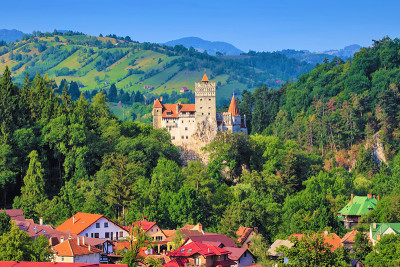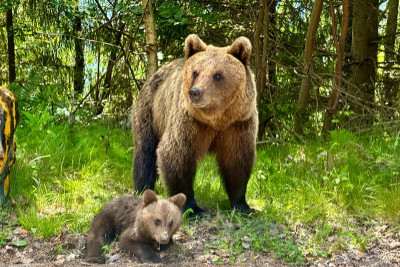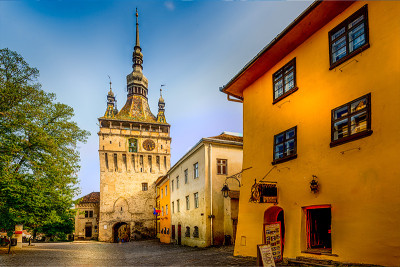Whether you celebrate Christmas or not, the holiday season is a magical time to visit Romania! Romania is one of the most religious countries in the European Union, with the vast majority of the country adhering to the Romanian Christian Orthodox faith. The holiday season in Romania lasts from about November 30th through January 7th.
If you are able to plan an extended holiday in Romania, we would highly recommend being in the country during those days, especially towards the end! One quick thing to note is that Christmas celebrations were put on hold while Romania was under the communist regime, from 1948-1989. Because of this, some of the holiday traditions in Romania are newer.
November 30Th
The Feast of Saint Andrew’s, or Saint Andrew’s Day, is celebrated on November 30th. Saint Andrew is the patron saint of Romania and of the Romanian Orthodox Church. The night before Saint Andrew’s Day is the Night of the Wolf (Noaptea lupului), so on that night Romanians often put garlic and crucifixes next to all windows and doors to ward off evil spirits (Strigoi) and vampires.
It is also believed that on the Night of the Wolf, the wolves are allowed to eat as many animals as they want, including humans. It is believed that the wolves can speak to humans, but anyone who hears a wolf speaking to them is soon to be eaten.
There are a couple other superstitions and customs and come with Saint Andrew’s Day. Young women put 41 grains of wheat under their pillows and if anyone steals their wheat during the night, that means the woman is going to get married in the next year. Women also light a candle and bring it to a fountain at midnight. Saint Andrew is supposed to protect the women from the wolves, and the women are able to catch a glimpse of the man they are to marry.
December 1St
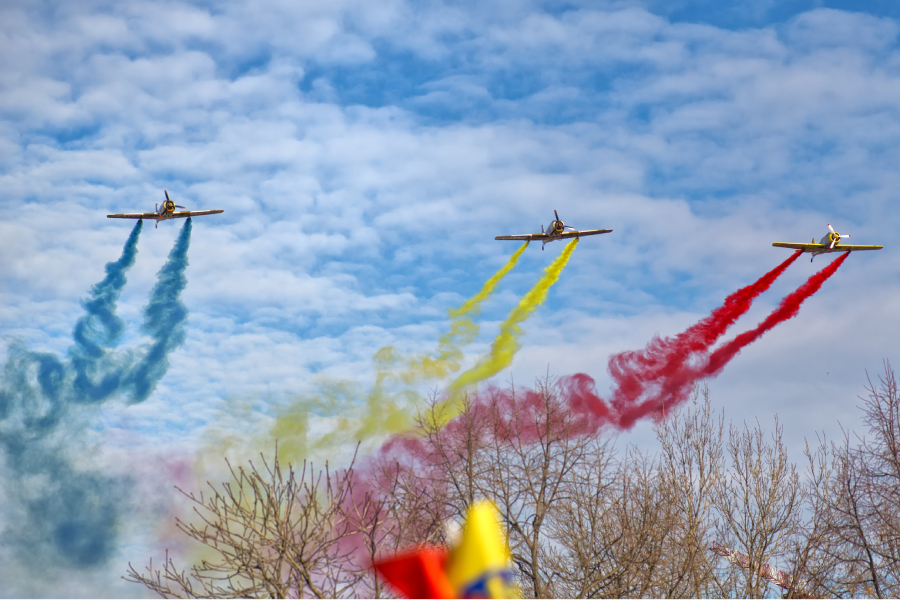
After Saint Andrew’s Day is the Great Union Day. This is a secular holiday that all of Romania can join in on celebrating. This is the celebration of the unification of Transylvania, Bessarabia, and Bukovina with the Romanian Kingdom. This happened on December 1, 1918. It is a National holiday.
The country celebrates with free concerts and parades in every city, and plenty of Mici d Fasole cu carnati, which are traditional dishes. It is a day of celebration and parties, with TV specials on air and fireworks at night.
December 6Th
This is Saint Nicholas Day; Saint Nicholas is considered to be the “true” Santa and he is the patron saint of children. On this day, or the night before, children are given gifts, normally inside laced up boots. Children are often given sweets or books, but if they have been naughty that year, they are given wooden sticks.
December 20Th
This is Saint Ignatius Day. On this day, Romanians slaughter a pig for Christmas. Even if the family does not own pigs or cannot sacrifice a pig, most Romanians celebrate by sacrificing some type of animal, even if it is not a pig. It is considered bad luck, however, to sacrifice a hen.
Many people also wait until this day to buy their Christmas trees at local markets or supermarkets.
Christmas Eve And Christmas Day
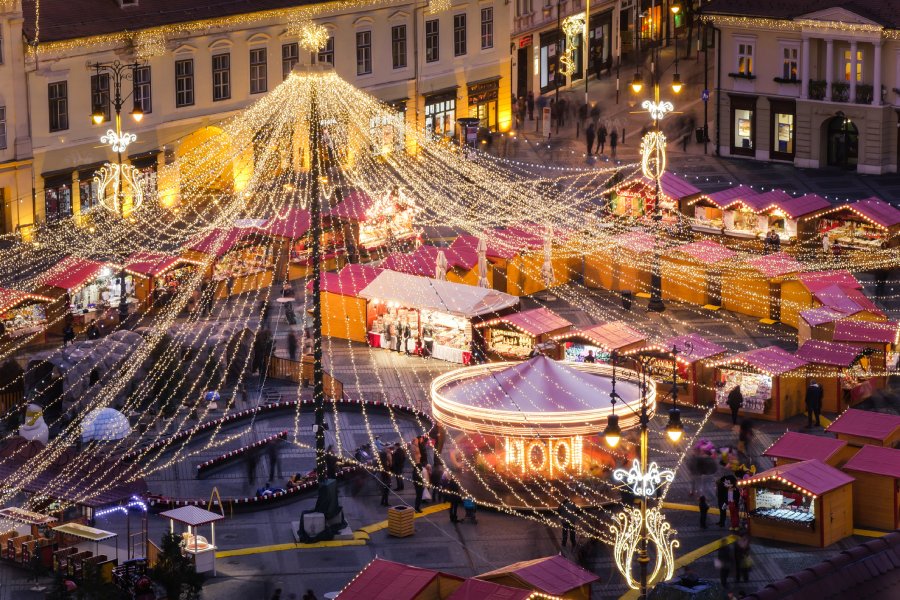
Neighborhood caroling happens on Christmas Eve. Normally children go around in groups caroling, and the women of the household bake cookies to hand out to the kids.
On Christmas Day, Romanians get together with their families and to have a bountiful dinner. They eat the pig they slaughtered a few days earlier and they invite all their loved ones, including close neighbors and friends. Along with pork, they eat pickled vegetables, a boeuf salad, and plenty of homemade wine!
Even though Romanians celebrate Saint Nicholas Day, kids also receive presents from Santa Claus on Christmas Day.
In preparation for Christmas, many people shop at local Christmas markets. Christmas markets are relatively new to Romania, but had received much success in other parts of Europe. The Romanians loved having Christmas markets in their towns and now Christmas markets are a rather integral part of celebrating Christmas in this country.
New Year’s Eve And New Year’s Day
New Year’s is celebrated in Romania much like it is in many Western countries. In Romania, though, New Year’s is sometimes called “little Christmas.” At New Year’s parades, a plough is paraded through the streets as a symbolization of good crops to come in the following year.
January 6Th
This is the Day of the Epiphany, also called Boboteaza or Teofania. In Western Christianity, the Epiphany is also called Kings’ Day as it celebrates the day the three Magi visited Jesus at his birth. In Eastern Christianity, the Epiphany celebrates something different: the day that Jesus was baptized in the Jordan River by John the Baptist.
Really, the celebration begins the day before as the priests bless the waters to hand out at church the following day. Parishioners take a small bottle of water home and use it to bless their homes, possessions, and animals. People also drink the water every morning for the proceeding nine days.
January 7Th
This is Saint John’s Day and it pretty much marks the conclusion of the winter holiday celebrations. This day celebrates Saint John the Baptist and can be seen as a continuation of the celebration of the Epiphany. There are many superstitions that go along with both the Epiphany and Saint John’s Day.
Saint John in the patron saint of infants, so many of the superstitions have to do with women get married or having babies. On this day, pregnant women are supposed to pray for their babies and women who want to become mothers are also encouraged to pray for a healthy pregnancy.
There you have it, this was the quick rundown of the Christmastime celebrations of Romania! Christmastime is a great time of year to visit the country, even if it is a bit cold, to be able to experience the customs and traditions of Romania!
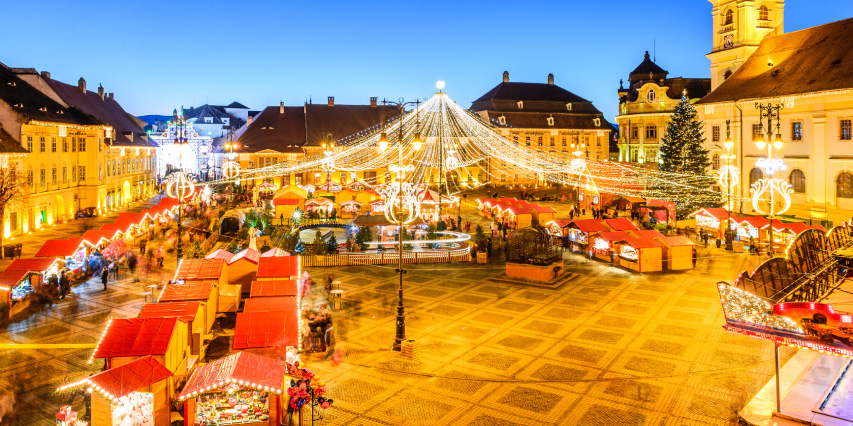
 ES
ES
 IT
IT
 DE
DE
 FR
FR
